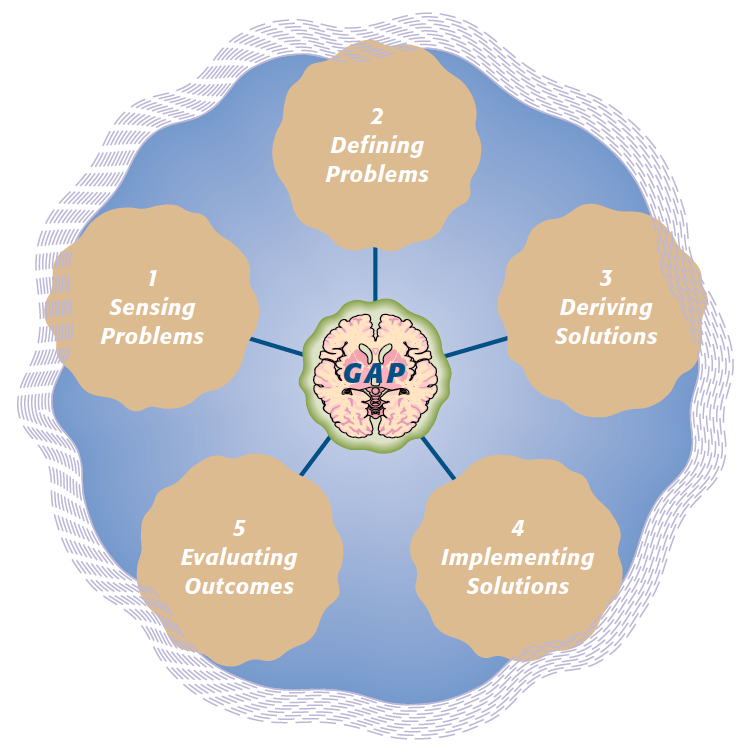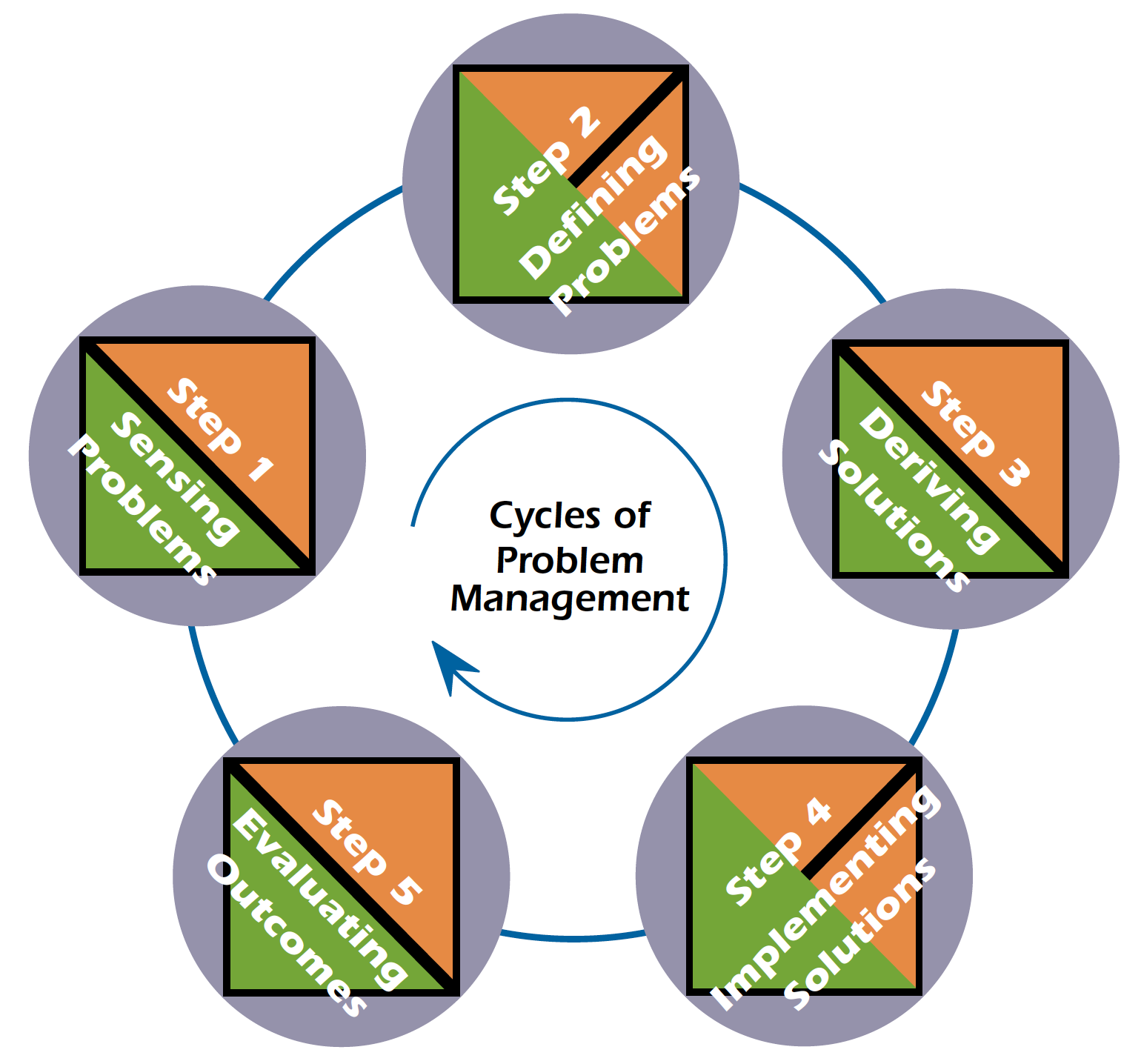05 Jan Conflict Modes and Problem Management
Ralph H. Kilmann, co-author of the Thomas-Kilmann Instrument (TKI)
Every member in an organization can be viewed as a problem manager, the nature of which can be usefully categorized into five steps: (1) sensing problems (noting if a gap exists between “what is” and “what could or should be” breaks a threshold of acceptability), (2) defining problems (uncovering the root cause of the gap), (3) deriving solutions (ways and means to close the gap), (4) implementing solutions (putting the chosen solution to effective use in a living, breathing organization), and (5) evaluating outcomes (re-assessing if the gap is still beyond a threshold of acceptability and, if it is, determining which errors of problem management were made along the way…and then the process continues).

The most damaging errors of problem management are in the second and fourth steps: defining problems and implementing solutions. Why? If you define the problem incorrectly, everything else you do in the remaining steps will be a complete waste of time and resources (no matter what the quality of the solution or how well you implement it). And if you fail to implement the solution properly (by ignoring egos, culture, resistance, fear, and office politics), you nullify everything that came before (defining problems and deriving solutions).

The collaborating mode, therefore, is best suited for defining problems and implementing solutions. These two steps are the most complex, since they deal with multiple perspectives and human nature. Those two steps are also the most important to get right, for the reasons noted above. As a result, it is worth the time and effort to create all the relevant conditions needed for using the collaborating mode — including cultural norms that encourage trust and candor, interpersonal skills for creative speaking and listening, a genuine spirit of teamwork and cooperation, and a performance appraisal system that explicitly rewards an engaging dialogue for complex problems.
Sensing problems and evaluating outcomes, however, are largely go/no-go decisions: Do we proceed (or continue) with problem management or do we stop (or cease) the process? As such, the conflict modes along the distributive dimension (competing, accommodating, and compromising) work just fine in the first and last step of problem management: Either you proceed or not (one person accommodates the other or insists on proceeding with the process) or you develop a compromise approach (proceeding for a certain amount of time, until we can better assess the importance of the gap).
The step of deriving solutions is also relatively simple (even if it can be very involving), once the problem has already been defined. Usually, several alternative solutions are possible with one decision model or another. A combination of competing and accommodating can then be used to select one of the proposed solutions (depending on how important the solution is to one person versus the other) or compromising can be the mode of choice (deriving a solution that combines a few key features of the different proposed solutions).
In the final analysis, the particular conflict modes that are used during each step of problem management have a great bearing on organizational success. If people avoid the large gaps between strategic goals and current performance, or between what stakeholders want and what they receive, everyone will suffer. And if the two most important steps of problem management (defining problems and implementing solutions) are avoided, minimized, or addressed on the distributive dimension, the members will cycle through the steps of problem management, again and again, with all their gaps remaining the same or even getting worse. Instead, using the right conflict mode for the appropriate step of problem management will increase the likelihood of resolving the organization’s most important problems — the first time around.
Kilmann Diagnostics offers a series of eleven recorded online courses and nine assessment tools on the four timeless topics: conflict management, change management, consciousness, and transformation. By taking these courses and passing the Final Exams, you can earn your Certification in Conflict and Change Management with the Thomas-Kilmann Instrument (TKI). For the most up-to-date and comprehensive discussion of Dr. Kilmann’s theories and methods, see his 2021 Legacy Book: Creating a Quantum Organization: The Whys & Hows of Implementing Eight Tracks for Long-term success.




